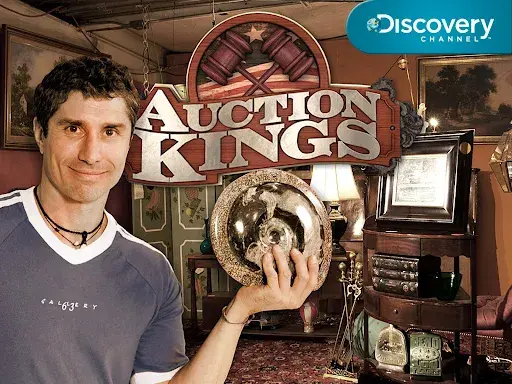A Stitch In Time: Clarke Auction Gallery’s August 21, 2025 Jo Anne Rath Shepherd’s Trove Of Thimbles Sale

The history of thimbles ties closely to the history of sewing with a needle and thread – which can be traced to nearly 20,000 years ago! Ancient thimbles, made from bone or leather, were made as digit protectors to guard against finger injury with a sharp needle. Thimbles began to be mass produced in England in the 16th century, with higher end versions evolving into status symbols and collectibles over time. Clarke Auction Gallery of Larchmont, NY, presented its 240 lot Jo Anne Rath Shepherd’s Trove Of Thimbles sale on August 21, 2025. Shepherd (American, 1947-2017) was a renowned digitabulist – or thimble collector – and the author of Antique and Unusual Thimbles, published in 1979 by A.S. Barnes & Company. Here are some eye-catching highlights from this well curated sale.
The top lot in this event was #0048, a collection of 18K gold French sewing objects in a handsome Asian-themed, hinged black lacquered case. Estimated at $100-1,000, it realized $1,536. The case was decorated with an abalone inlay of a seated drummer next to a palm tree and measured c. 2.675″ x 5″ x 0.875″. The tools, housed in the case’s fitted interior, included a needle case, thimble, a pair of scissors, needle, and a bodkin.
A bodkin usually takes the form of tweezers or an oversized, needle with a rounded tip. Their purpose is to help thread ribbons, laces, elastic, or other long strings through long, skinny fabric channels. They are also helpful in protecting delicate fabrics from rips, tears, or abrasions which may occur during the threading process. They became quite popular starting in the 17th century, when they were used to lace corsets and other fitted garments of the era.

Antique thimbles made from precious metals were a key category in this late summer sale. Lot #0031, a 14K gold and pearl thimble, was estimated at $100-1,000 and sold for $1,408. The thimble had a 0.75″ diameter and was 0.875″ tall and weighed 3.4 dwt. It was decorated with an overall textured pattern and set with six bezel mounted pearls around its bottom edge. It was presented in a fitted leather case which was stamped “Collingwood & Co To The Royal Family 46.Conduit Street. W.” in the interior in gold.
Collingwood & Co. was an esteemed London based jeweler, founded in 1817. The company produced both medals as well as custom jewelry for the British Royal family. Among other noteworthy clients, Collingwood & Co. was a favorite jeweler of Lady Diana Spencer. Collingswood gifted the Princess a pair of diamond and pearl drop earrings which became one of her signature accessories; these are now worn frequently by her daughter in law, the Dutchess of Cambridge. The firm ceased operations in 2004.

This auction featured strong selections of etuis, or small ornamental cases. Lot #0081, a carved walnut etui, was estimated at $100-1,000 and delivered $800. This hinged, 19th century example measured c. 2.08″ x 1.50″ x 1.80″ and was lined with a fitted, metallic interior that was engraved with floral inspired swirls. Despite its petite proportions, this etui housed a pair of scissors, needle case, several needles, a thimble, a silver mounted ruby glass scent bottle, and a tiny pocket knife.
The history of etui goes back as early as the 13th century. Their name is derived from the French word “to hold.” These functional, miniature containers would often house sewing apparatus, cosmetics, writing tools, and other daily necessities. They came into fashion starting in the 18th century when manufacturers across Europe produced them in precious metals decorated with gemstones to appeal to high society women. At that time, etui were often worn suspended from a chatelaine belt clip.

Needle cases also made a strong showing in this sale. Lot #0078, a cylindrical, enameled needle case, was estimated at $100-1,000 and traded hands at $512. This French, silver mounted example measured c. 2.63″ and was detailed overall with colorful nature-inspired swags and gold painted edges. This dual purpose case opened on one end as a needle case; the other end housed a secret a scent bottle with a fitted stopper. It was marked with a boar’s head, indicating its metallic trip was .800 silver.
.800 silver is a popular alloy used in 19th to early 20th century decorative items made in Europe. Interestingly .800 silver was not used on a commercial scale for jewelry making in the United States during that time. It is made from 80% pure silver and 20% other metals, often copper. .800 silver itself is very durable due to the inclusion of copper in its matrix, but tends to tarnish really easily.

This sale came full circle with sewing accoutrements, thread holders, nécessaires, chatelaines, and other related materials. Lot #0032, an antique bear drawn barrel thimble holder, was estimated at $100-1,000 and made $704. This charming, playful example was in the form of a standing, cast iron bear pulling a brass barrel and silver thimble atop a two wheeled wagon. The vignette was mounted on a black stone base.
For more information on Clarke Auction Gallery’s August 21st, 2025 JO ANNE RATH SHEPHERD’S TROVE Of THIMBLES sale, please see www.liveauctioneers.com/catalog/384561_jo-anne-rath-shepherd-s-trove-of-thimbles//.










